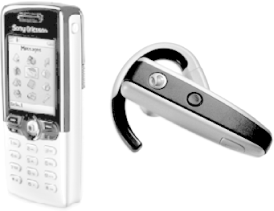6.3 Bluetooth Service Profiles
| As a consumer technology, Bluetooth needs to be widely supported by vendors to be successful. Interoperability, the ability for different devices (from different manufacturers) to work with one another, is the key factor in securing this broad support (many a technology has been stalled because users were frustrated by incompatibilities and finger-pointing among vendors). In Version 1.1 of the Bluetooth specification (the latest at the time of this writing), there are 13 profiles. A profile is a description of a particular functionality and how to implement it based on the specification. Bluetooth device manufacturers use these profiles as a guide to implement specific functionality. With this approach, vendors can be sure that their devices will work with current and future Bluetooth products. Let's take a closer look at the 13 profiles defined in Bluetooth 1.1:
In this chapter, we will make use of several of the 13 profiles for file transfer, Internet connectivity, etc.
Figure 6-11. The Sony Ericsson T610 and the Bluetooth Headset HBH-30 (shown with the kind permission of Sony Ericsson; copyright Sony Ericsson 2003) |
EAN: N/A
Pages: 92